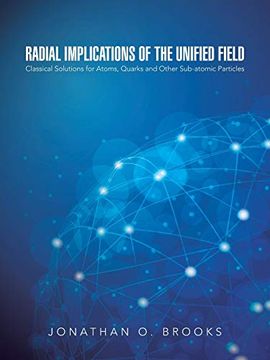Share
Radial Implications of the Unified Field: Classical Solutions for Atoms, Quarks and Other Sub-Atomic Particles
Jonathan O. Brooks (Author)
·
Iuniverse
· Paperback
Radial Implications of the Unified Field: Classical Solutions for Atoms, Quarks and Other Sub-Atomic Particles - Jonathan O. Brooks
Choose the list to add your product or create one New List
✓ Product added successfully to the Wishlist.
Go to My Wishlists
Origin: U.S.A.
(Import costs included in the price)
It will be shipped from our warehouse between
Monday, June 24 and
Wednesday, July 10.
You will receive it anywhere in United Kingdom between 1 and 3 business days after shipment.
Synopsis "Radial Implications of the Unified Field: Classical Solutions for Atoms, Quarks and Other Sub-Atomic Particles"
If you use quantum mechanics, teach quantum mechanics, or study chemistry, physics, or mathematics at any level you'll be fascinated by the classical discoveries that are revealed in Radial Implications of the Unified Field. My book, Radial Implications of the Unified Field, was inspired by an equation that I derived for the separation of two similar steroidal materials by solvent extraction over fifty years ago. I defined a variable alpha that must always be less than unity. This variable a, which varies as the ratio (N-35) to (N-28), so that when N increases then a approaches unity. From this I derived for the radius, a new variable set, R = -10 a Ln (a) divided by Square root of (N+6). This defines the solution sets of orbital matrices which apply to all of the elements. A variable r in the Associated Legendre Equation, another source, which was supposedly a radius of the Schrödinger equation had to be divided into my variable in a to obtain all true radii. I first used it to find the .529 that replicates the radius of hydrogen. Because time evolution was zero I converted the vector Laplacian to the Poisson electron density. The Unified Field was inherent in the Rydberg equation; but not using kilogram test particles. You must use unit electron masses.
- 0% (0)
- 0% (0)
- 0% (0)
- 0% (0)
- 0% (0)
All books in our catalog are Original.
The book is written in English.
The binding of this edition is Paperback.
✓ Producto agregado correctamente al carro, Ir a Pagar.

